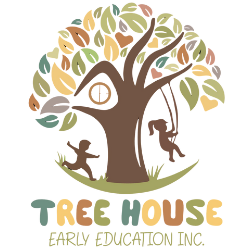
Our Montessori-inspired curriculum integrates nature, independence, and creativity to nurture future leaders. Children learn through exploration in a bilingual (Spanish and English) and multicultural environment. Each lesson is tailored to meet the unique developmental needs of every child, promoting confidence, organization, and a love for learning.
Nature is the home of children, which is why it’s important for them to feel safe and connected to it.
Contact with nature allows children to explore through their senses: touch, smell, taste, sight, and hearing. Nature is a source of wonder for children, as they can marvel at watching a squirrel jump or smelling flowers. Contact with nature is an opportunity for children to learn through observation.














Classrooms
Each classroom is designed to foster independence, exploration, sensory development, and autonomy in a safe, respectful, and carefully prepared environment for children’s growth.
 Cielo classroom (6)
Cielo classroom (6)
Infants ages 4 months to 9 months.
 Estrella classroom (7)
Estrella classroom (7)
Mix ages infant/toddlers 10 to 19 months.
 Luna classroom (8)
Luna classroom (8)
Toddlers 20 to 32 months.
 Sol classroom (9)
Sol classroom (9)
Preschoolers 2.7 to 5 years.
Cielo Classroom (7)
Mixed Ages (10 to 19 months)
Environment:
• A calm, safe, and cozy space with soft lighting.
• Floor to encourage free movement.
• Mirrors at the baby’s level for self-exploration.
• Low bars to help develop strength and balance.
Materials and Montessori Approach:
• Montessori mobiles (Munari, Octahedron, Gobbi) to stimulate vision.
• Grasping toys such as wooden rings and natural rattles.
• Treasure baskets with objects of different textures and materials.
• A space for movement.
• Dedicated educators. responding respectfully to each baby’s needs.
Estrella Classroom (6)
Infants (4 to 9 months)
Environment:
•A prepared space that promotes independent exploration and safety.
• Low shelves and furniture to allow children to access materials independently.
• A cozy nap area with floor mattresses.
• Small tables and chairs suited to their size.
Materials and Montessori Approach:
• Sensorial materials like object permanence boxes and grasping cylinders.
• Treasure baskets with objects of different materials and shapes.
• Practical life activities: stacking, spooning, and texture exploration.
• First artistic experiences with finger painting and natural play dough.
• Language development through songs, simple stories, cards, English and Spanish.
Luna Classroom (6)
Toddlers (20 to 32 months)
Environment:
• A space that fosters independence and free movement.
• Clearly defined areas: practical life, sensorial, language, and art.
• Low shelves and accessible furniture to promote autonomy.
• A relaxation corner with cushions and books.
Materials and Montessori Approach:
• Practical life materials: pouring liquids, hand washing, and table cleaning.
• Sensorial activities such as the Pink Tower, knobbed cylinders, and sound boxes.
• Introduction to language materials like nomenclature cards and interactive books.
• Gross motor development space with small stairs, tunnels, and ramps.
• Activities that encourage self-care, such as dressing, washing hands, and tidying up.
Sol Classroom (9)
Preschoolers (2.7 to 5 years)
Environment:
•Well-organized learning areas: practical life, sensorial, math, language, and culture.
• Materials arranged in trays for independent work.
• Spaces for both individual and group activities.
• An outdoor area for exploration and nature-based learning.
Materials and Montessori Approach:
• Advanced sensorial materials like color tablets and sandpaper boards.
• Introduction to math materials such as sandpaper numbers and number rods.
• Language materials: sandpaper letters, rhyming cards, and phonetic objects.
• More complex practical life activities like preparing snacks, sweeping, and folding
clothes:
• Cultural exploration with maps, global music, and simple science experiments.
